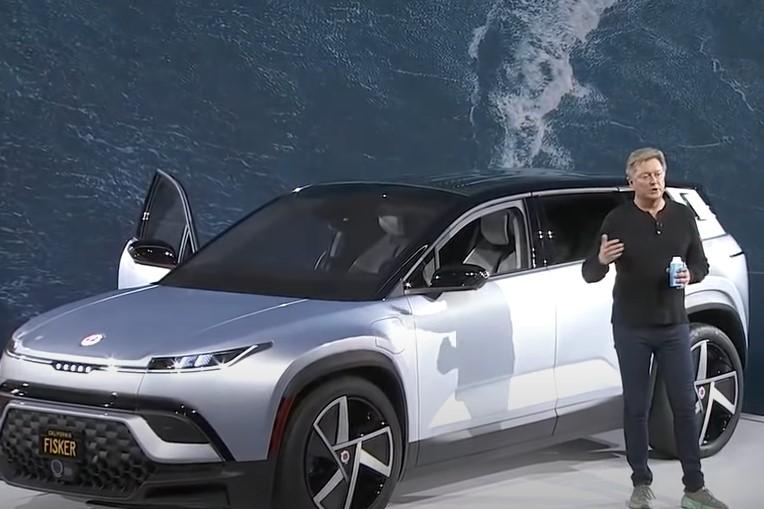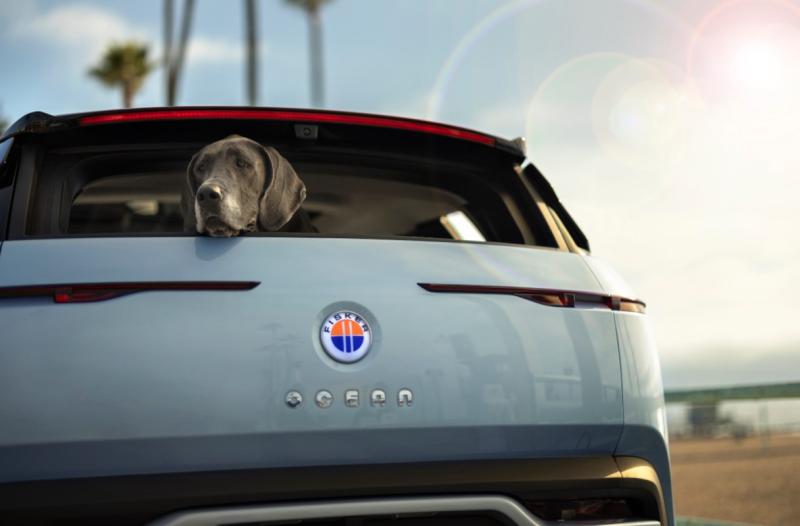If Henrik Fisker makes it big in the electric vehicle biz, much will depend on things somewhat beyond his control. Such as: whether the needed supply pipeline of components and batteries holds up. Also, whether consumers get over their worries about finding enough charging stations for long trips. Those are a couple gotchas, for starters.
Having survived an earlier disappointment in the auto business, the founder and CEO of Fisker Inc. has a polite regard and quick response when journalists mention these EV industry pain points, at least for those few that could be addressed in a short interview with Fierce Electronics.
About having enough charging stations: “I’m not really worried,” Fisker said in his native Danish accent. “We have more independent charging stations than Tesla and it’s just a matter of education.”
By education, he meant, once owners of sleek new Fisker Ocean SUV EVs (ready in November) get in their vehicles and drive with a fully connected network, they will soon discover they are able to use an in-car display that points them in the right direction to charging stations where they will “find all they need.”
He predicted tens of thousands of such charging ports in 2024 partly through a partnership with Electrify America. (The group now has more than 670 charging stations with nearly 2,900 individual DC fast chargers, with plans to expand to 1,700 charging stations by 2026 with 9,500 fast chargers.)
As for consumer worries about taking 40 minutes or even much longer to charge a vehicle (depending on the charging setup), he said new owners of EVs soon realize that home charging is a “lot more convenient…It’s a matter of habit.”
He does have one nifty tech idea for quick charging: “We need to have a quick fill up for 100 miles that you get in four or five minutes. We are very close to that already. Once you own an EV, you forget about this.”
Battery and component supply concerns are arguably more daunting, but Fisker said deals with suppliers are clearcut, keeping the production of the Ocean for on-sale delivery on Nov. 17 in the U.S. and Europe.
Magna in Graz, Austria will be producing the vehicles in a carbon neutral plant and has a “giant network for securing all the chips they need.” Fisker met Magna last year and was able to see a “clear roadmap” for needed chips. As for Foxconn, “the chairman assured me they won’t miss any deadlines. I don’t see any delays…”
In what might go down as a classic bit of humility by a vehicle CEO, Fisker added regarding his company’s chip supply preparations: “We have been lucky--or had the foresight.”
Importantly, Fisker holds a co-investment partnership with Foxconn to on Project PEAR (Personal Electric Automotive Revolution) to build an under-$30,000 electric vehicle on a lightweight platform called FP28 at a facility in Ohio. PEAR would be Fisker’s second production model, with a production start in late 2023.
PEAR is being engineered with fewer chips than other EVs, obviously out of the need to reduce the burden on the chip supply chain, but also to make it simpler for over the air upgrades with software as vehicle owners realize they want new features. “We have to make sure we optimize it,” explained Neil Banerjee, vice president of advanced EE and ADAS at Fisker. “For us to have a tangible product people love, we want to give them bang for the buck.”
Despite the engineering prowess at the company, Fisker said the 25,000 people who have reserved an Ocean SUV have answered a survey saying their top two reasons to buy from Fisker are design and sustainability.
“Tech might have been third because tech is what people are coming to expect,” Fisker said. “There’s a bit of an illusion you get ahead of everybody else because of the best tech. No single carmaker is going to get super tech in their anti-lock brakes.”
Having said that, it is ironic that the biggest feature Fisker promoted at CES 2022 in the coming Ocean SUV was being first to market with digital radar. “Yes, we are first with digital radar, but that’s the way the cost gets down,” Fisker said. “The real race today with tech is who can get it into the car first.”
Fisker has also pushed back on the idea that a car design from inception to production should take far less than four to five years. “We are trying to break that unwritten rule,” he said.
RELATED:Fisker Ocean EV uses digital imaging 4D radar
Digital radar reduces the cost compared to using lidar in Ocean and future vehicles, he said. Ocean’s lowest price tier, called the Sport, will start at $37,499 before government incentives, with Ocean Ultra at $49,999 and Ocean Extreme and Ocean One starting at $68,999. Sport will get 250 miles range on a charge,with up to 350 miles-plus on the top model variations. “It was really important to make a super cool vehicle that was accessible to everyone,” Fisker has said.

Price for an EV is a big concern on the minds of first-time buyers, according to surveys, which is why the PEAR deal with Foxconn is premised on going below $30,000. Having said that sub-$30,000 price point is a goal, Banerjee added, nonetheless, “There are people who want to pay for tech.”
Yes, price is another potential gotcha in the EV market. If half of all new cars being sold in the U.S. need to be electric by 2030, it will take a variety of price points to get there. Fisker evidently gets that point.
What comes through in a short interview with Henrik Fisker is his keen business sense around pricing and markets and awareness of the value of new technology, especially if it can be directly related to sustainability .
“We’re doing many things differently and will be the world’s fist production car to have a large solar panel on the roof to actually charge the high voltage battery,” Fisker said. “To make that happen we have a special converter to make it possible. We are going to have suppliers source sustainable materials that are automotive grade.” That means wheels of carbon fiber, carpets from plastic and seats from fibers derived from t-shirts. “It even comes down to the glue you select that isn’t toxic.”
Why? “It stems from a desire I have and the people in this company have. This is not based on a marketing survey, and people are joining in.”
Fisker unveiled the new Ocean at the Manhattan Beach, Calif., pier in November prior to the LA Auto Show. The company’s headquarters are nearby. Originally an automobile designer with B.S. degree from 1989 under his belt, Fisker’s creative side shown through.
“The Fisker logo actually was drawn pretty much around here on a beach when I sat one afternoon and saw the sunset,” he recalled. “So when you see the Fisker logo it is actually the sunset over the ocean. The two bars are for the designer’s pen and engineer’s ruler [representing] the two people who come together to create vehicles.”
